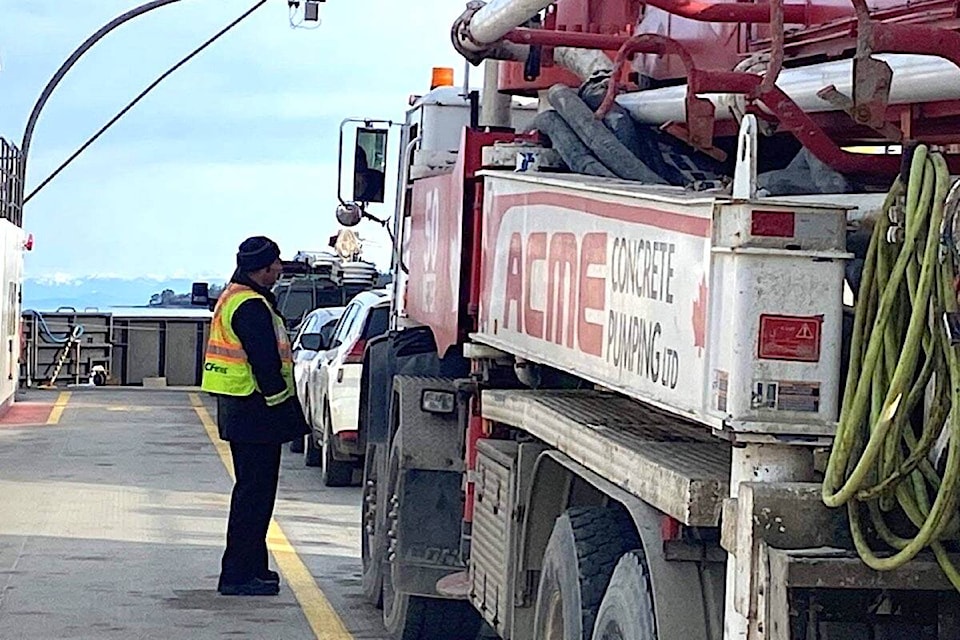Submitted
Summer lineups to reach ferry-dependent Hornby and Denman islands are legendary, and about to get worse, according to a Hornby/Denman Ferry Advisory Committee news release.
The press release claims that in November, the 21 car Kahloke, the main ferry to Hornby, was downgraded for the amount of vehicle and passenger weight it can carry. Why? Because it is 49 years old and Transport Canada requirements resulted in downgrading the weight it can carry,
Before the reduction of capacity for the Kahloke, the ferries, by BC Ferries’ own calculations, have the worst performance ratings in the entire fleet in terms of summer overloads and ferry waits. Census information shows a 19 per cent increase in population on Denman and more than 20 per cent on Hornby between 2016 and 2021.
“Ferry service to our islands has not kept pace with population growth and the huge increases in tourism,” Denman trustee David Critchley said.
“The results are extremely long waiting times and dangerous traffic lineups on our narrow island roads.”
Before the Hornby ferry was reduced in capacity because of deterioration, summer waits last year were already five or six sailings. Trips from Vancouver Island to Hornby were taking up to six hours. With reduced capacity on the Hornby ferry, residents expect a worse situation this summer.
“Our concerns are not a reflection on the hard-working ferry workers who are members of our communities, and have even more at stake as they live with the nightmare of explaining reduced service levels on every shift they work,” Island trustee Grant Scott said.
In February, BC Ferries told the committee that capacity on the Hornby and Denman ferries will increase in 2026, in response to the 2021 downgraded carrying capacity of the Hornby Ferry.
“The lack of adequate ferry service impacts every aspect of Island life,” said Karen Ross of the Hornby Economic Enhancement Corporation. “This latest capacity reduction will cause further disruptions to access for education, health, food, emergency services, family visits, as well as for people who want to come here for their holidays.”
Tourism is a major economic driver. Forty per cent of Hornby’s land mass is in parks, and the province is heavily invested in nature on the island. In 2021, B.C. Parks spent $11 million to acquire two properties to add onto Tribune Bay Provincial Park. About 3,000 students a year visit the Tribune Bay Outdoor Education Centre.
The province is supporting three projects on Hornby: an affordable housing project, a new arts centre and high-speed fibre optic cable infrastructure. Gutted ferry service pushes up the cost of each project, the release notes.
Due to long ferry waiting times, suppliers of food and construction materials are raising delivery rates, thus raising the cost of living.
The Hornby/Denman Ferry Advisory Committee is calling for the following steps to be applied:
1. Immediately get Route 22, the Hornby ferry, a newer vessel with serviceable capacity.
2. Immediately match increasing the ferry capacity on Route 22, with more capacity on Route 21 that provides access to Denman and Hornby from Buckley Bay on Vancouver Island.
“We need bigger, newer ferries to service Hornby and Denman Islands now,” Scott said. “Waiting until 2026 is unacceptable.”
